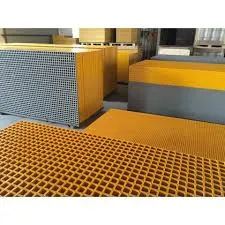
-
 Afrikaans
Afrikaans -
 Albanian
Albanian -
 Amharic
Amharic -
 Arabic
Arabic -
 Armenian
Armenian -
 Azerbaijani
Azerbaijani -
 Basque
Basque -
 Belarusian
Belarusian -
 Bengali
Bengali -
 Bosnian
Bosnian -
 Bulgarian
Bulgarian -
 Catalan
Catalan -
 Cebuano
Cebuano -
 China
China -
 China (Taiwan)
China (Taiwan) -
 Corsican
Corsican -
 Croatian
Croatian -
 Czech
Czech -
 Danish
Danish -
 Dutch
Dutch -
 English
English -
 Esperanto
Esperanto -
 Estonian
Estonian -
 Finnish
Finnish -
 French
French -
 Frisian
Frisian -
 Galician
Galician -
 Georgian
Georgian -
 German
German -
 Greek
Greek -
 Gujarati
Gujarati -
 Haitian Creole
Haitian Creole -
 hausa
hausa -
 hawaiian
hawaiian -
 Hebrew
Hebrew -
 Hindi
Hindi -
 Miao
Miao -
 Hungarian
Hungarian -
 Icelandic
Icelandic -
 igbo
igbo -
 Indonesian
Indonesian -
 irish
irish -
 Italian
Italian -
 Japanese
Japanese -
 Javanese
Javanese -
 Kannada
Kannada -
 kazakh
kazakh -
 Khmer
Khmer -
 Rwandese
Rwandese -
 Korean
Korean -
 Kurdish
Kurdish -
 Kyrgyz
Kyrgyz -
 Lao
Lao -
 Latin
Latin -
 Latvian
Latvian -
 Lithuanian
Lithuanian -
 Luxembourgish
Luxembourgish -
 Macedonian
Macedonian -
 Malgashi
Malgashi -
 Malay
Malay -
 Malayalam
Malayalam -
 Maltese
Maltese -
 Maori
Maori -
 Marathi
Marathi -
 Mongolian
Mongolian -
 Myanmar
Myanmar -
 Nepali
Nepali -
 Norwegian
Norwegian -
 Norwegian
Norwegian -
 Occitan
Occitan -
 Pashto
Pashto -
 Persian
Persian -
 Polish
Polish -
 Portuguese
Portuguese -
 Punjabi
Punjabi -
 Romanian
Romanian -
 Russian
Russian -
 Samoan
Samoan -
 Scottish Gaelic
Scottish Gaelic -
 Serbian
Serbian -
 Sesotho
Sesotho -
 Shona
Shona -
 Sindhi
Sindhi -
 Sinhala
Sinhala -
 Slovak
Slovak -
 Slovenian
Slovenian -
 Somali
Somali -
 Spanish
Spanish -
 Sundanese
Sundanese -
 Swahili
Swahili -
 Swedish
Swedish -
 Tagalog
Tagalog -
 Tajik
Tajik -
 Tamil
Tamil -
 Tatar
Tatar -
 Telugu
Telugu -
 Thai
Thai -
 Turkish
Turkish -
 Turkmen
Turkmen -
 Ukrainian
Ukrainian -
 Urdu
Urdu -
 Uighur
Uighur -
 Uzbek
Uzbek -
 Vietnamese
Vietnamese -
 Welsh
Welsh -
 Bantu
Bantu -
 Yiddish
Yiddish -
 Yoruba
Yoruba -
 Zulu
Zulu
mandrel
The Significance of Mandrels in Manufacturing and Engineering
In the realm of manufacturing and engineering, the term mandrel can often be encountered but may not be thoroughly understood by those outside the industry. A mandrel is a device or tool that serves as a support or form for shaping materials, primarily in processes such as bending, molding, or machining. Commonly utilized in the production of pipes, tubes, and various industrial components, mandrels are integral to achieving desired geometries and maintaining the structural integrity of the final product.
Understanding Mandrels
At its core, a mandrel is designed to provide a stable and precise inner diameter or shape around which materials can be formed. It can be made from a variety of materials, including metal, plastic, or wood, depending on the application requirements and the materials being processed. Mandrels can vary significantly in design; they may be solid or hollow, fixed or adjustable, and can be single-use or reusable, depending on the manufacturing context.
Applications of Mandrels
The applications of mandrels are vast and span multiple industries. One common use is in the fabrication of metal pipes. When manufacturing pipes, a mandrel is inserted into the pipe material to ensure that it retains a specific shape during the bending process. This prevents the pipe from collapsing or deforming and allows for smooth and consistent curves, essential for plumbing, oil, and gas industries.
In addition to piping, mandrels are frequently employed in the production of composite materials. For instance, in the aerospace sector, lightweight composite tubes are often shaped around a mandrel to form strong, lightweight components for aircraft structures. The mandrel is removed after the curing process, resulting in a precisely shaped component that meets stringent aerospace tolerances.
mandrel

Moreover, mandrels are crucial in the automotive industry, where they are used in manufacturing various metal parts. During processes like roll forming or tube bending, a mandrel ensures that the materials are correctly shaped, thus influencing the overall performance and safety of the final product.
Precision and Quality Control
One of the primary reasons mandrels are so vital in engineering applications is their contribution to precision and quality control. With the increasing demand for high-performance components in diverse fields, manufacturers must adopt processes that yield consistent and accurate results. The proper use of a mandrel helps mitigate the risks of defects that could result from improper shaping or forming, significantly enhancing product reliability.
Furthermore, the evolution of technology has led to the development of advanced mandrels equipped with sensors and automation capabilities. These modern mandrels can monitor stress, temperature, and pressure, allowing for real-time adjustments to be made during manufacturing processes. This level of precision not only improves the quality of the products but also enhances efficiency by reducing waste and rework.
Conclusion
In conclusion, mandrels play an essential role in modern manufacturing and engineering, serving as a foundation for creating high-quality components across numerous industries. Their ability to ensure precision, improve structural integrity, and streamline production processes underscores their significance. As technology continues to advance, the design and application of mandrels will likely evolve, leading to even greater efficiencies and product quality. Understanding the importance of mandrels is crucial for anyone involved in manufacturing and engineering, as they are a key component in delivering reliable and effective solutions in an increasingly competitive market.









